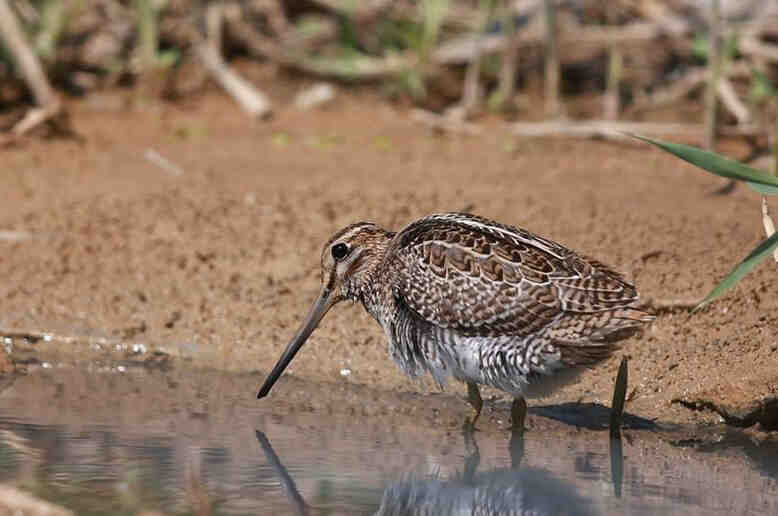Gallinago nemoricola
IUCN
LCBasic Information
Scientific classification
- name:Gallinago nemoricola
- Scientific Name:Gallinago nemoricola,Wood Snipe
- Outline:Wading birds
- Family:Charadriformes S.family Coniformes
Vital signs
- length:28-32cm
- Weight:About 100g
- lifetime:10-15 years or so
Feature
Sex timid and withdrawn
Distribution and Habitat
Forest cones are found in the Himalayas, including northern India, Nepal, Myanmar and Yunnan, China, southern Tibet, and sometimes wander into Thailand, Pakistan and Sri Lanka in the winter.
Forest cones mainly inhabit the alpine forest area above 1000 meters above sea level in summer, up to about 5000 meters above sea level, and often go down to the low mountains and the plain area at the foot of the mountains in winter.
Appearance
Forest Cone has a brown forehead. Black from crown to nape. Central crown brown, finer, sometimes less pronounced. Brow lines and side of head white, dark yellowish white or pale yellow, with brown spots. From the eye to the eye and under the ear feathers to the pillow, each has a dark brown band. Velvet black on upper back and shoulders, brown markings on upper back near nape; Shoulder with broad brown feather margin; The lower back and waist are black, with brown markings, and the lower back is more or less white. Brown and blackish-brown markings cross the tail; There are 16 or 18 tail feathers, and the outermost tail feathers are narrow, usually only 3-4 mm. The central tail feathers are black with two brown stripes and tips. The subterminal stripes are very broad and brown in color. Lateral tail feathers with black and white markings. With the exception of the central tail feathers, all tail feathers have an off-white tip. The wings are dark brown. The overlying wings are dark bro
Details
Wood Snipe, small wading bird, no subspecies.

It is timid and withdrawn, often living alone on the banks of forests and rivers and ponds, and in nearby swamps and grasslands. The flight is slow and bulky, suddenly flies up after fright, the direction of flight is uncertain, often flying in waves, usually not far and falling into the grass. It feeds mainly on small animals such as insects and insect larvae.
The breeding period of forest conus is from May to July, breeding in the mountain forest of 1200-4000 meters, good at courtship flight show. The nest is usually built on the grassland on both sides of the river in the forest, and the nest is mostly placed in the ground pit covered by ferns on the bank, and the nest is padded with soft dead grass. Each clutch lays 4 eggs. The eggs are pale yellow in color with brown spots and are 38 mm ×27 mm in size.
The global population is estimated at 2500-9999 individuals (mature individuals). Due to the continuous loss of habitat, the forest cona population continues to decline and is classified as a vulnerable species. In China, the distribution area is narrow and the number is rare.
September 8, 2022 news, by the Chengdu Research Base of Giant Panda Breeding organized the world's first record of rare bird forest conia hatchery behavior completed in Pingwu County.
Listed on the IUCN Red List of Threatened Species (IUCN) for 2016 ver 3.1 - Vulnerable (VU).
It was listed in the List of Land Wild Animals under State Protection that are beneficial or have important economic and scientific research value (Item 152) issued by the State Forestry Administration of China on August 1, 2000.
Listed in China's "National Key Protected Wildlife List" (February 5, 2021) Level 2.
Protect wild animals and eliminate wild meat.
Maintaining ecological balance is everyone's responsibility!








